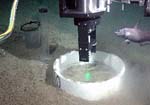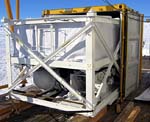Tip sheets highlight timely news and events at Washington University in St. Louis. For more information on any of the stories below or for assistance in arranging interviews, please see the contact information listed with each story.
Trapping carbon dioxide in an icy age
Researchers explore the ocean floor with rare instrument

A fish on the ocean floor off California gazes at a sight no human has seen first-hand: a modified Raman spectrometer gathering data on a carbon dioxide sample.
In collaboration with oceanographers from the Monterey Bay Aquarium Research Institute (MBARI), a team of geologists at Washington University in St. Louis is using a rare instrument on the ocean floor just west of California. One of their earliest projects was to see if it’s possible to capture carbon dioxide from the atmosphere and store it on the ocean floor. It’s the first deployment of the Raman spectrometer on the ocean floor.
Letting readers ‘decide for themselves’
New book explains plants as medicines

How much different do the bones of similar animals have to be for the classification of a new species? That is the question that drove Stephanie Novak, a new doctoral candidate in the Department of Earth and Planetary Sciences in Arts & Sciences at Washington University in St. Louis, to develop a novel model to determine classification of a new species. Novak presented details of her model at the annual meeting of the Geological Society of America, held Nov.2-5 in Seattle.
Hold that TIGER
Aria-9 poised for liftoff

An estimated 1,000 students from 28 K-12 schools from Missouri, Illinois, Washington D.C., New Jersey, Montana, and Queensland, Australia are participating in Aria-9, student experiment packages that get tested on NASA space flights. The Aria-9 is the latest Washington University in St. Louis Project Aria’s “fly-and-compare” K-12 experiment packages, according to Keith Bennett, adjunct assistant professor of computer science and engineering at Washington University in St. Louis, and Aria project director.